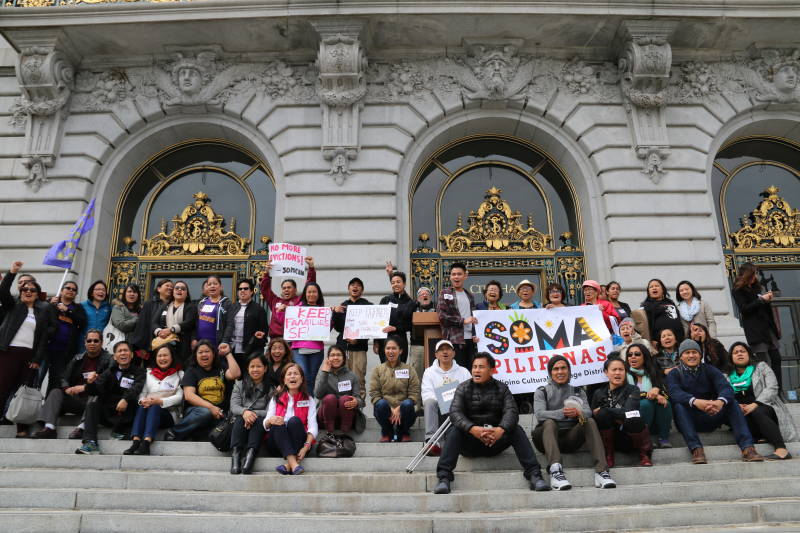The San Francisco Board of Supervisors unanimously approved a plan Tuesday to designate a Filipino cultural heritage district in a South of Market neighborhood, which community leaders hope will not only recognize the Filipino presence there but also preserve it.
SoMa Pilipinas will include the Gran Oriente, the old International Hotel (it was on Kearny north of Market but is historically important), the Rizal Apartments, the Iloilo Circle Building, the Bayanihan Community Cultural Center and other "cultural assets" identified by the Filipino-American Development Foundation, which spearheaded the effort. SoMa is home to 5,106 Filipinos, according to 2010 census data.
Ligaya Avenida is president of the FADF Board. She urged supervisors to recognize the Filipino community's contributions to the fabric of life in San Francisco.
"We will validate the presence of the Filipinos who have lived and worked in the corridors of SoMa for decades," said Avenida at a press conference outside City Hall before the meeting. "They have helped make the South of Market what it is today."
SoMa residents like Juvy Barbonio say SoMa Pilipinas will hopefully go beyond signs and murals and do something to help Filipinos worried about redevelopment and gentrification there.
